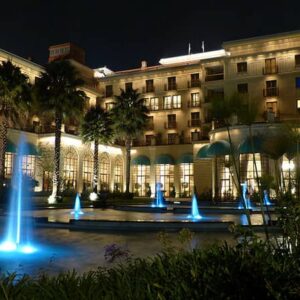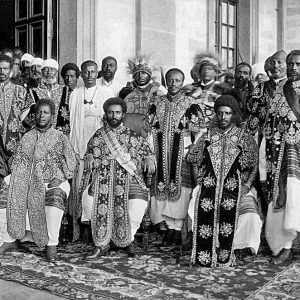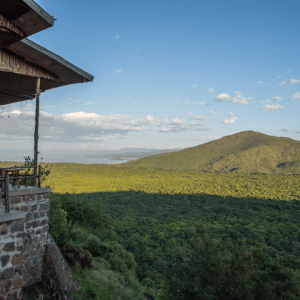Gambella in Ethiopia is a region known for its unique cultural heritage and diverse natural landscapes. Steeped in history and rich in tradition, Gambella is home to a melting pot of ethnic groups, including the Anuak, Nuer, and Mezhenger. The region is also known for its lush forests, fertile farmlands, and the vast Baro River, which serves as a lifeline for the local communities. With its captivating beauty and vibrant culture, Gambella is a must-visit destination for those looking to explore the hidden gems of Ethiopia.
Key Takeaways
- Gambella is a hidden gem in Ethiopia’s southwest, with a rich cultural heritage.
- The diverse ethnic groups in Gambella have unique traditions that are an important part of the region’s identity.
- Music and dance play a significant role in Gambella’s cultural heritage, with different styles and rhythms for different occasions.
- Gambella’s traditional clothing and adornment are colorful and intricate, reflecting the region’s cultural diversity.
- Oral history is a crucial part of Gambella’s cultural identity, preserving stories and traditions that have been passed down through generations.
Gambella’s Local History

Gambella’s history is as rich and diverse as its culture. This region, characterized by its lush landscapes and the Baro River, has been a crossroads of various ethnic groups, each contributing to the tapestry that makes the area unique. Historically, Gambella has been a center of trade, especially during the times when the Baro River was a main transport route, connecting the interior of Ethiopia to the White Nile. The region has seen its share of challenges, from colonial ambitions to internal conflicts, yet it has maintained a resilient and distinct identity. The local history of Gambella is not just a story of survival; it’s a testament to the strength and perseverance of its people, reflecting a deep connection to the land and a commitment to preserving their heritage.
Gambella Diverse Ethnic Groups
Gambella is home to a remarkable diversity of ethnic groups, each with its own unique culture, language, and traditions. This diversity is a source of pride and strength for the region, offering a kaleidoscope of cultural experiences for both residents and visitors.
Anuak

The Anuak, also known as Anywaa, are a Nilotic ethnic group native to the Gambella region. Traditionally, the Anuak are known for their rich cultural traditions, including vibrant music, dance, and storytelling. Their society is closely tied to the land and the rivers, with agriculture and fishing being central to their way of life. The Anuak have a deep connection to their history and ancestors, which is reflected in their ceremonies and social practices.
Nuer

Adjacent to the Anuak, the Nuer are another prominent Nilotic ethnic group in Gambella. They are pastoralists, with cattle playing a significant role in their culture, economy, and social organization. The Nuer have a unique system of governance and social organization that revolves around kinship, age sets, and cattle camps. Their cultural practices, such as scarification and cattle raiding, are well-documented and form an essential part of their identity.
Majangir

The Majangir are known for their profound knowledge of the forest and sustainable living practices. They inhabit the more remote and forested areas of Gambella, relying on hunting, gathering, and slash-and-burn agriculture. The Majangir have a rich oral history that speaks to their relationship with the natural world and their resilience in the face of external pressures.
Opo

The Opo people, though lesser-known, contribute significantly to the cultural diversity of Gambella. They share linguistic similarities with the Nuer and Anuak but maintain distinct cultural practices. The Opo are primarily agriculturalists, with a culture that emphasizes community cohesion and cooperation.
Komo

The Komo are a smaller ethnic group in Gambella, primarily engaged in agriculture and hunting. Despite their size, the Komo have a rich cultural heritage, with unique traditions and beliefs that enrich the region’s cultural fabric.
Mezhenger
The Mezhenger, or Majang, inhabit the forests of Gambella and are known for their hunter-gatherer lifestyle. Their knowledge of the forest and its resources is unparalleled, making them crucial guardians of the region’s biodiversity. The Mezhenger culture is a testament to the symbiotic relationship between humans and nature, showcasing a deep understanding of ecological balance and sustainability.
The Role of Music and Dance in Gambella’s Cultural Heritage
Music and dance are not just forms of entertainment in Gambella; they are vital components of the region’s cultural heritage, serving as mediums for storytelling, communal bonding, and the expression of social values. Each ethnic group in Gambella, from the Anuak to the Nuer and beyond, brings its unique rhythms, dances, and songs that reflect their way of life, beliefs, and history.
The Anuak, for instance, are known for their vibrant music and dance scenes, which are integral to their celebrations and ceremonies. Their music often features the thom, a traditional drum, accompanied by spirited dances that tell stories of heroism, love, and community. Similarly, the Nuer use music and dance to commemorate significant life events and transitions, such as marriage ceremonies and initiation rites. These performances are not merely for spectacle; they are deeply ingrained in the fabric of Nuer society, symbolizing unity and continuity.
In Gambella, music and dance also play a crucial role in fostering social cohesion and identity among its diverse ethnic groups. These artistic expressions offer a window into the soul of Gambella, showcasing the rich tapestry of traditions that make the region uniquely captivating. Through music and dance, the people of Gambella communicate their values, histories, and aspirations, creating a living heritage that resonates with both young and old.
Gambella’s Traditional Clothing and Adornment
Traditional clothing and adornment in Gambella are more than just attire; they are symbols of cultural identity, status, and community belonging. Each ethnic group in the region has its distinctive dress code that reflects its cultural norms and environmental adaptations.
For example, the Anuak people are renowned for their colorful beads and elaborate body adornments, which play a significant role in their social and ritual life. Women often wear vibrant skirts and adorn themselves with intricate beadwork, while men may wear traditional cloths and carry ornamental spears, signifying their status within the community.
The Nuer, on the other hand, emphasize simplicity and functionality in their traditional attire, often related to their pastoral lifestyle. However, during special occasions, Nuer men and women adorn themselves with distinctive scarifications and ochre, which are considered marks of beauty and bravery.
In Gambella, traditional clothing and adornment are not merely about aesthetics; they are deeply embedded with meaning, serving as markers of ethnic identity and social standing. These traditional attires and adornments are crafted with care, embodying the skills and artistic sensibilities passed down through generations. They tell a story of a people deeply connected to their land and traditions, proud of their heritage and eager to share it with the world.
The Importance of Agriculture and Livestock in Gambella’s Culture
Agriculture and livestock are not merely economic activities in Gambella; they are the lifelines of its culture and tradition. The fertile lands of the region, nourished by the Baro River, support a rich tapestry of crops, while the vast grasslands provide ample space for cattle, goats, and sheep. For the people of Gambella, farming and herding are more than livelihoods; they are practices imbued with cultural significance and ancestral wisdom.
The cycle of the seasons dictates the rhythm of life here, with festivals and social gatherings often centered around planting and harvest times. Livestock, especially cattle, hold a place of honor in many Gambella communities, being integral to social transactions such as marriage dowries and ceremonial gifts. These practices are not just about economic necessity; they are deeply connected to the values of community, family, and respect for the land.
Gambella’s Art and Craftsmanship: From Wood Carvings to Pottery
Gambella’s rich cultural landscape is also expressed through its art and craftsmanship. The region’s artisans, drawing inspiration from their natural surroundings and cultural heritage, create objects that are both functional and beautiful. Wood carvings, pottery, and textiles are some of the most prominent forms of traditional artistry found in Gambella, each telling a story of the region’s history, beliefs, and aesthetic values.
Wood carving is a particularly notable craft, with artisans creating intricate designs that are used in everyday objects, religious artifacts, and ceremonial items. Pottery, too, holds a special place in Gambella’s artistic traditions, with the skillful hands of potters shaping clay into vessels that carry both water and cultural significance. Textile weaving, though less common, is a vibrant expression of Gambella’s artistic talent, with traditional garments showcasing the region’s distinctive patterns and colors.
Things to Do in Gambella
Gambella, with its vast landscapes and rich cultural tapestry, offers a plethora of activities that cater to the adventurous spirit, the cultural enthusiast, and the nature lover. Here are some curated experiences that we believe should not be missed:
Explore the Gambella National Park
For those who revel in the beauty of the natural world, the Gambella National Park is a treasure trove of biodiversity. Spanning a vast area, this park is home to an array of wildlife, including rare species such as the Nile lechwe and the white-eared kob. The park’s landscapes, ranging from savannahs to riverine forests, provide a stunning backdrop for wildlife viewing and nature photography. Embark on a safari to witness the majestic beauty of Ethiopia’s wildlife in their natural habitat.
Visit the Anuak and Nuer Villages
Gambella is not just about its natural beauty; it’s about its people. A visit to the Anuak and Nuer villages allows you to experience the region’s rich cultural heritage firsthand. Engage with the local communities, learn about their traditions, and witness their daily lives. From the vibrant dance performances to the intricate craftwork, these encounters offer a glimpse into the soul of Gambella’s ethnic groups.
Participate in Traditional Festivals
Gambella’s calendar is dotted with festivals and ceremonies that showcase the region’s cultural diversity and heritage. Participating in these festivals is a unique opportunity to immerse yourself in local traditions, from the music and dance to the traditional attire. Each festival tells a story, celebrating the community’s history, values, and aspirations.
Enjoy River Activities on the Baro River
The Baro River, a lifeline for many of Gambella’s communities, offers a range of activities for those looking to enjoy the region’s scenic waterways. Canoe trips along the river provide a peaceful way to explore the lush landscapes, observe local wildlife, and experience the tranquility of Gambella’s natural environment. Fishing enthusiasts can also indulge in their hobby, engaging with the local fishermen to learn about traditional fishing techniques.
Discover Local Cuisine
No visit to Gambella is complete without experiencing its culinary delights. The region’s cuisine is a reflection of its cultural diversity, offering a variety of dishes that cater to all tastes. From traditional Ethiopian dishes to local specialties made with fresh, indigenous ingredients, dining in Gambella is an adventure for the palate.
Conclusion
In our journey through Gambella, Ethiopia, we’ve traversed the rich tapestry of cultural heritage, delving into the diverse ethnic groups, their unique traditions, religious practices, and the pivotal role of agriculture and livestock in their lives. We’ve celebrated the artistry and craftsmanship that breathe life into every artifact, from wood carvings to pottery, each telling a story of Gambella’s vibrant culture and enduring spirit. As we conclude, it’s clear that Gambella is not just a region; it’s a living, breathing testament to Ethiopia’s cultural diversity and resilience. Our exploration reveals the essence of Gambella—a place where traditions flourish, communities thrive in harmony, and cultural heritage is preserved for generations to come. For those of us seeking to understand the soul of Ethiopia, Gambella offers a window into the heart of its people, their lands, and their stories. We invite you to join us in embracing the beauty of Gambella, to learn from its history, celebrate its present, and contribute to its future.
Meet Hanan Akmel, our SAAS SEO Specialist with a rich experience of 5 years in enhancing online presence for diverse clients. With a passion for digital landscapes and a keen eye for search engine trends, Hanan excels in crafting strategies that significantly boost search engine rankings and user engagement. Her expertise lies in seamlessly integrating technical SEO with content-driven approaches, ensuring a holistic growth for her clients’ digital footprint.








